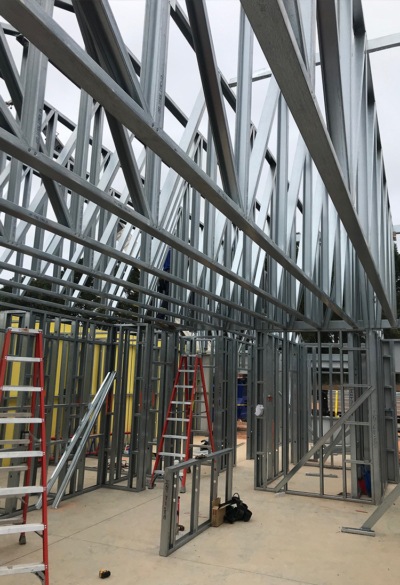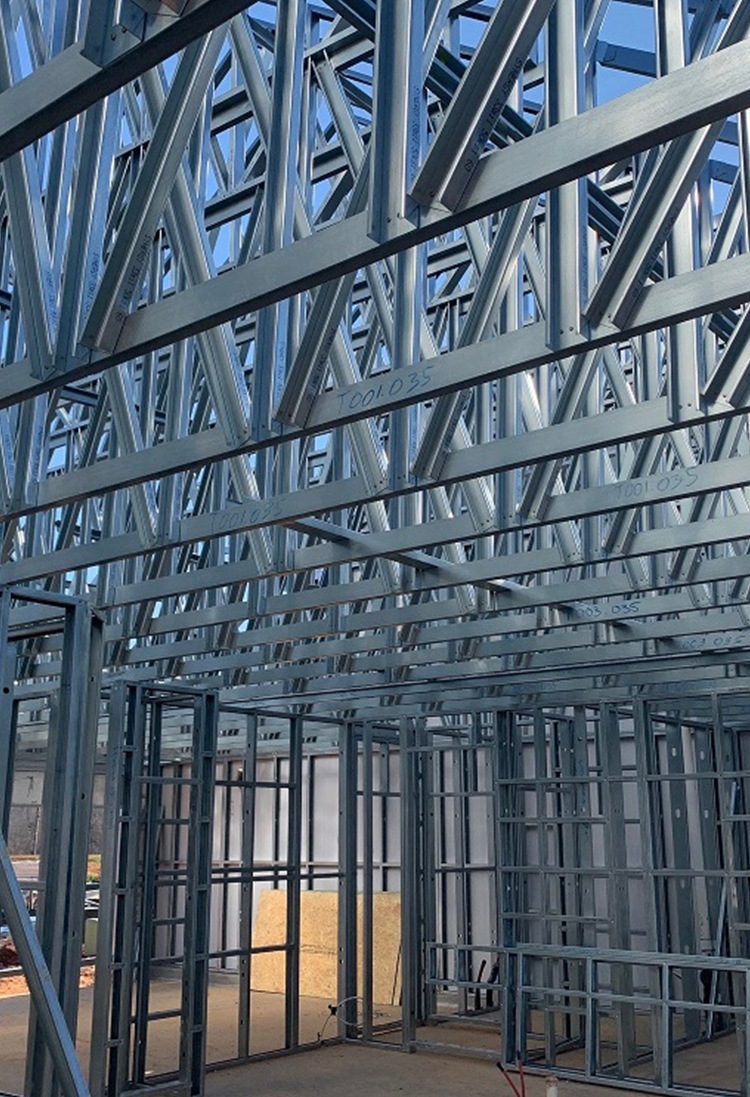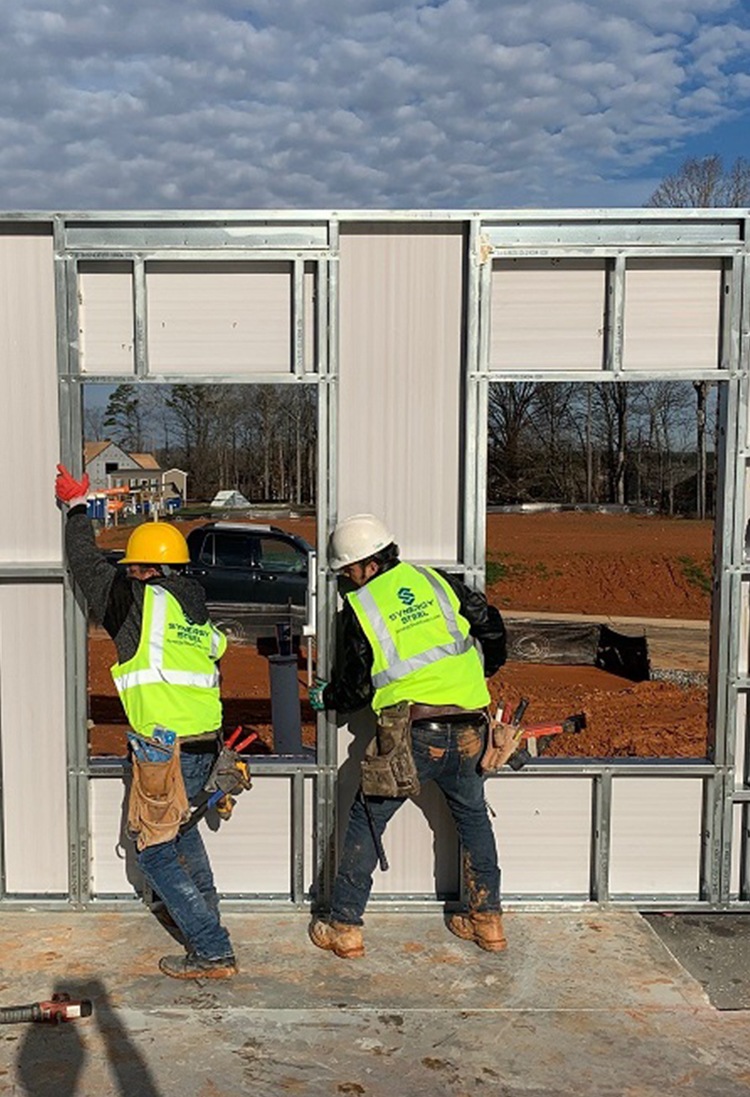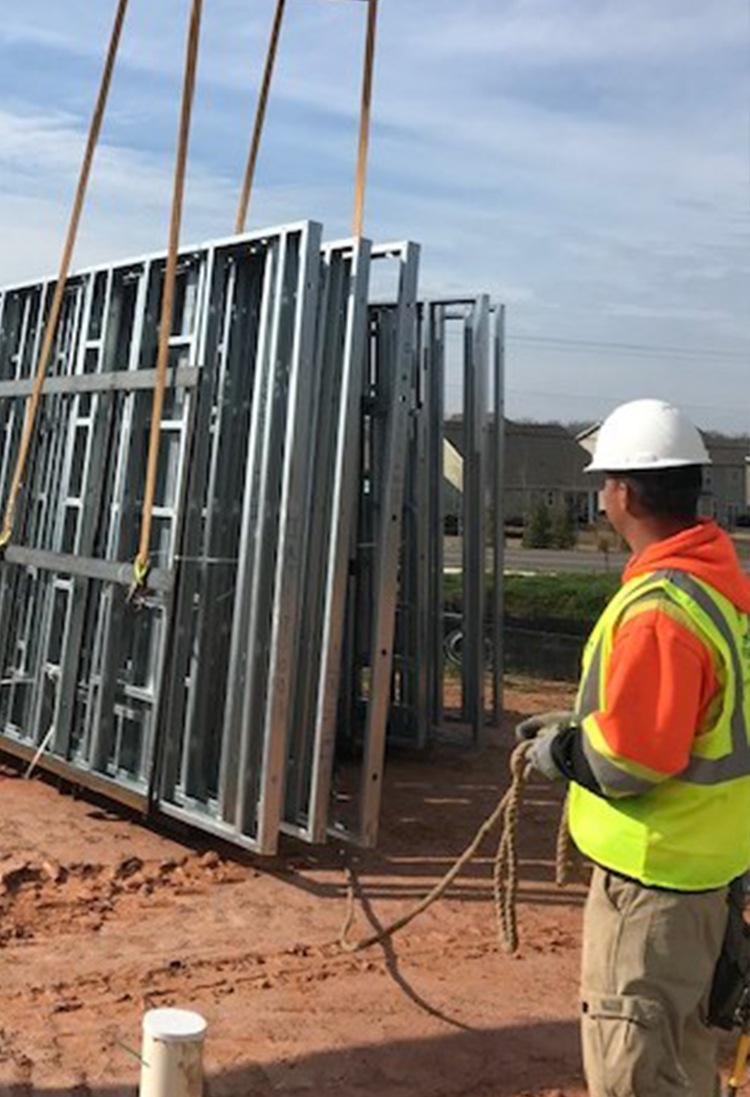Moving the building process away from the physical site and into a controlled factory environment offers multiple advantages.
Light Gauge Steel Panelization
Panelization is a prefabrication technique. Wall panel assembly occurs off-site in a controlled manufacturing environment. Panelization is an ideal method for cold-formed steel framing systems, as framing members are cut to exact links.
Compared to traditional building methods, panelization significantly shortens construction schedules. By utilizing panelized building systems, owners, developers, and the construction team each benefit. Quality materials are produced in a controlled working environment. Additional advantages of panelization include flexibility in design, increased durability (CFS panels will not shrink, split, warp, or crack), cost savings, reduced on-site labor, and lower maintenance.
Light gauge steel framing members are structurally sound, providing an alternative solution to typical block and plank construction. Load-bearing walls, flooring systems, and roof assemblies are panelized. Moreover, panelization facilitates the quick and safe completion of a quality exterior shell – with the added benefit of reduced costs.
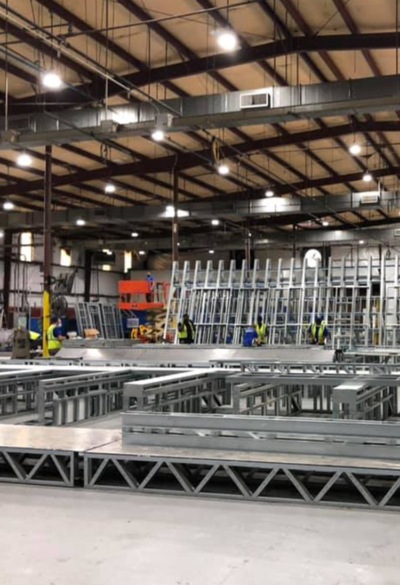
Offsite Construction
Offsite construction has been around for years, but there is growing interest in this construction method, particularly in the past decade. Here are some reasons why:
Efficiency and predictability
By building offsite, the process is the same every time. This streamlined practice encourages both increased performance and decreased time to manufacture components. Offsite construction avoids site condition delays, ensures quality, and guarantees on-schedule delivery.
Safety
The factory offers a more predictable setting than the physical construction site, eliminating the variables of weather and visibility. A stable, consistent environment produces fewer errors. And, many of onsite construction’s most dangerous hazards – such as falls from height or equipment accidents – are mitigated in the factory.
Sustainability
Offsite construction requires less heavy machinery and less energy. Transporting the finished building to the site also uses minimal vehicles, reducing waste. Accurate calculation of material requirements enables builders to save by purchasing in bulk.
Less labor
A smaller workforce is required to construct a building in a factory setting. Fewer workers and wage costs keep building prices more affordable.
Insurance Savings with Cold-Formed Steel
Non-combustible structures, like those built with cold-formed steel, boast better loss histories. In addition, insurance underwriters view these structures as lower risk. This perspective can translate to lower costs and broader coverage than combustible wood framing.
Insurance premiums are one of the many factors that can determine a project’s final price tag. Premiums represent nearly 5% of costs during construction. On the whole, premiums embody up to 10% of the cost of the long-term operation of the structure. As a growing construction industry creates demand for insurance coverage, rates rise, and underwriting capacity tightens. In turn, developers and owners must take a closer look at different options. Many now consider insurance beyond simple “protection against loss” and view it as a tool for maximizing return on investment.
